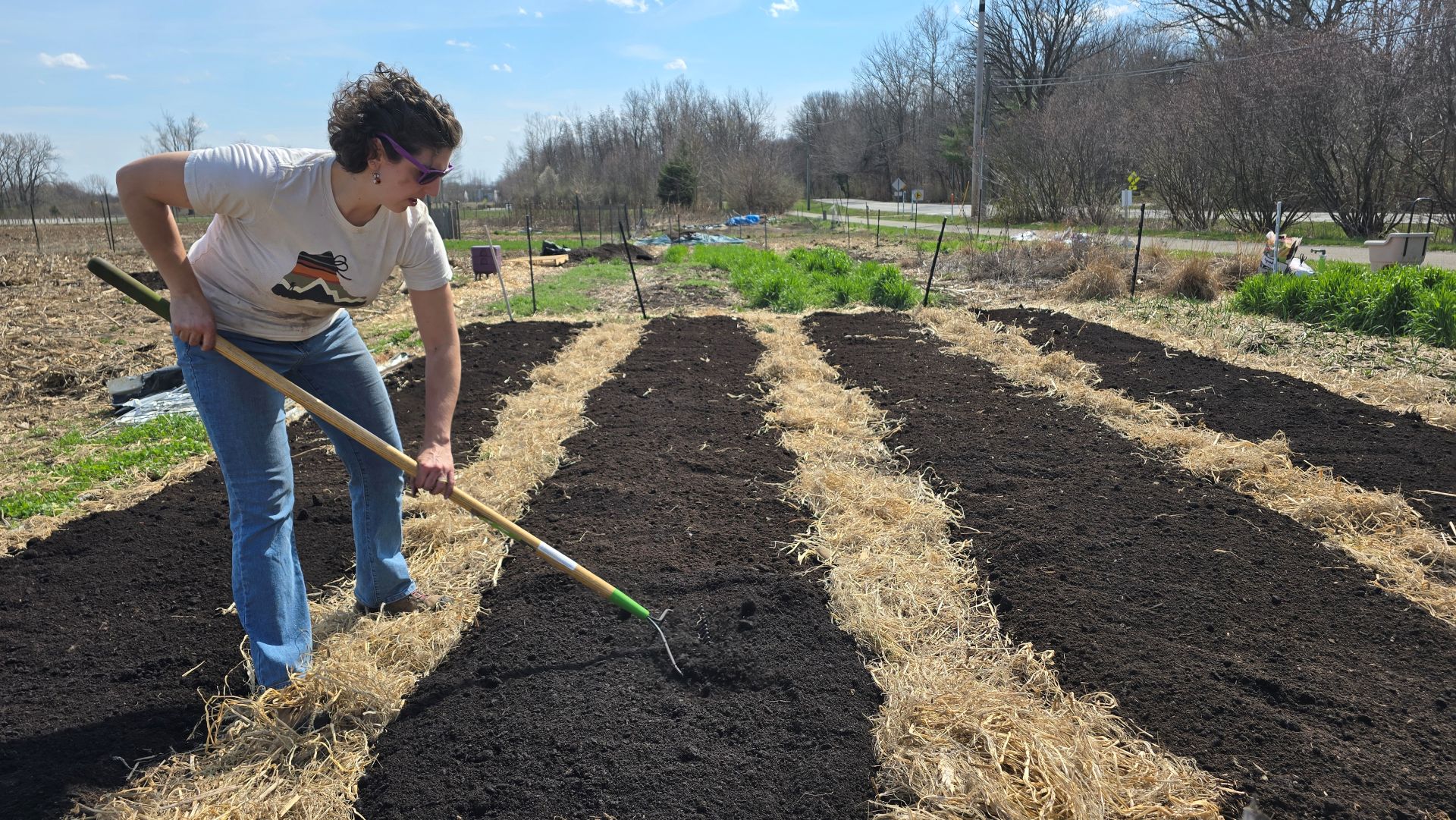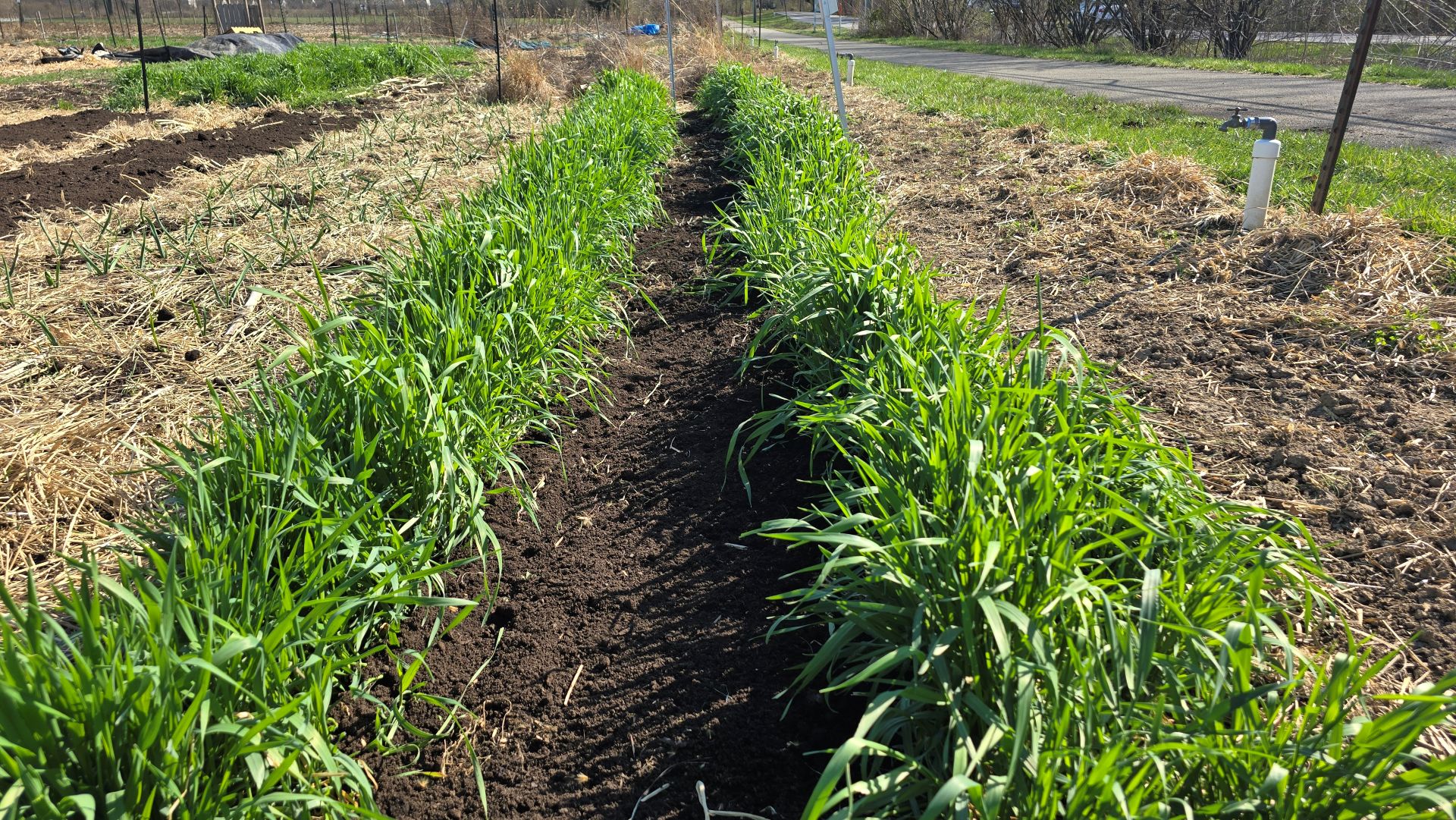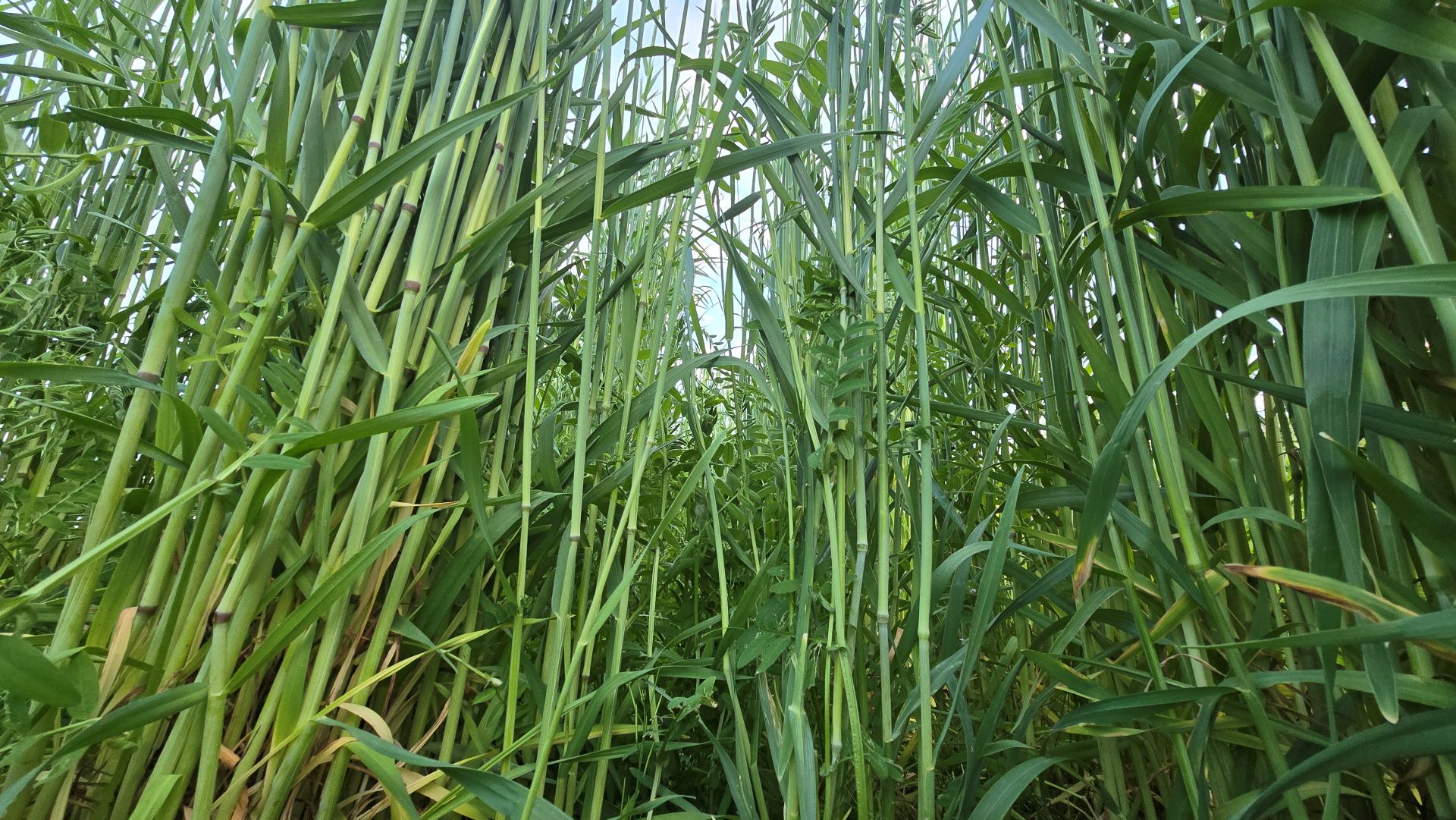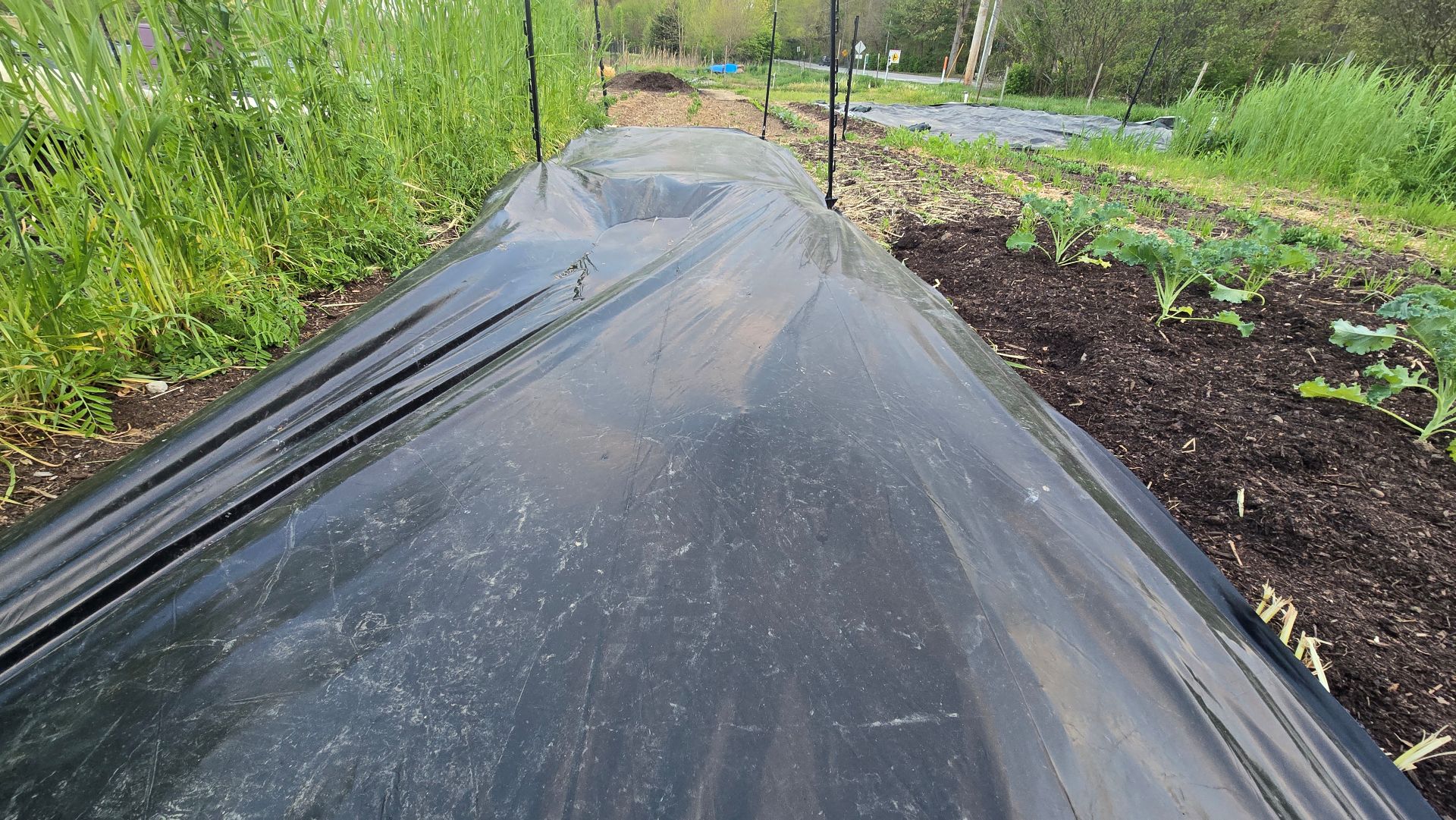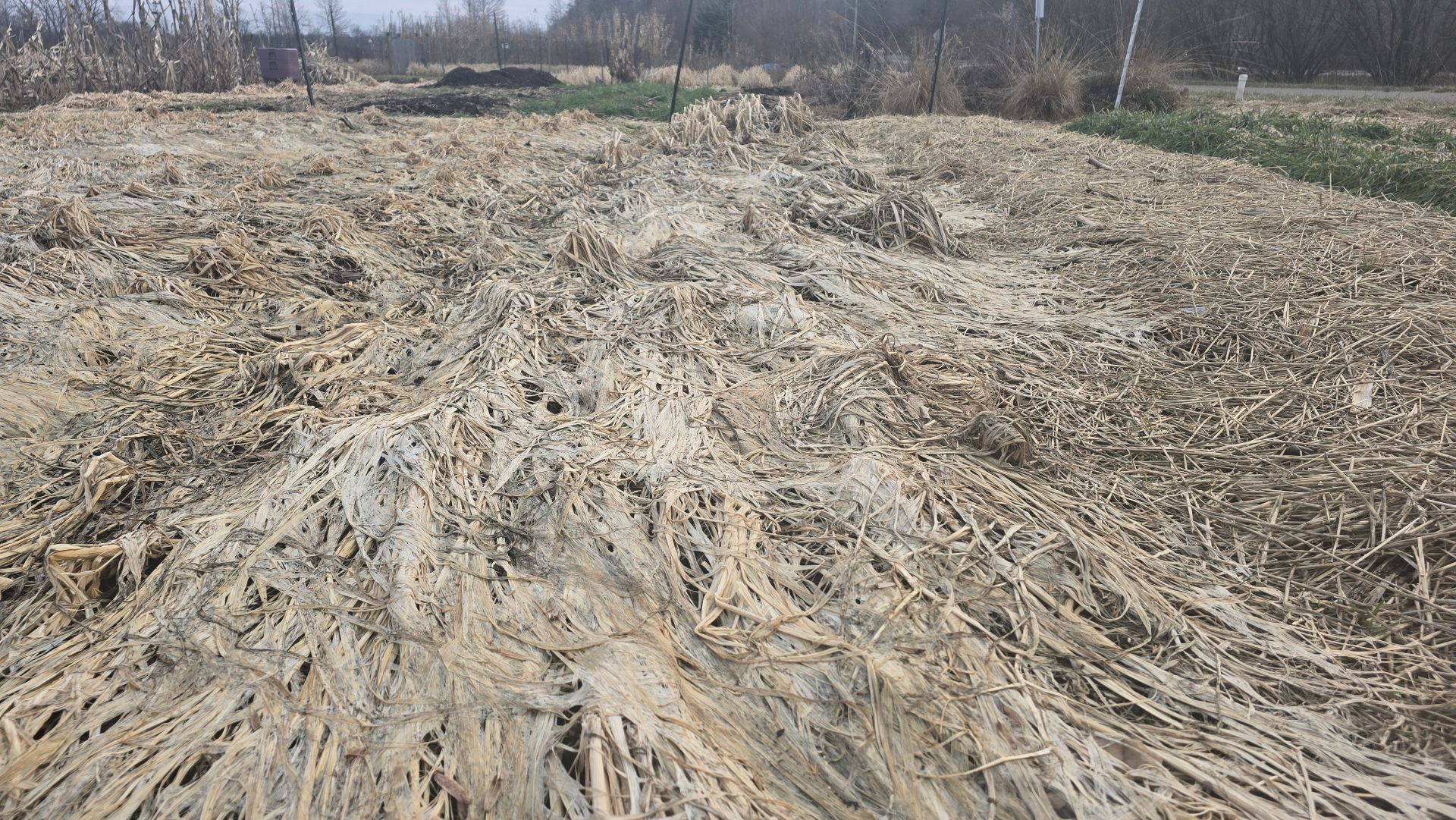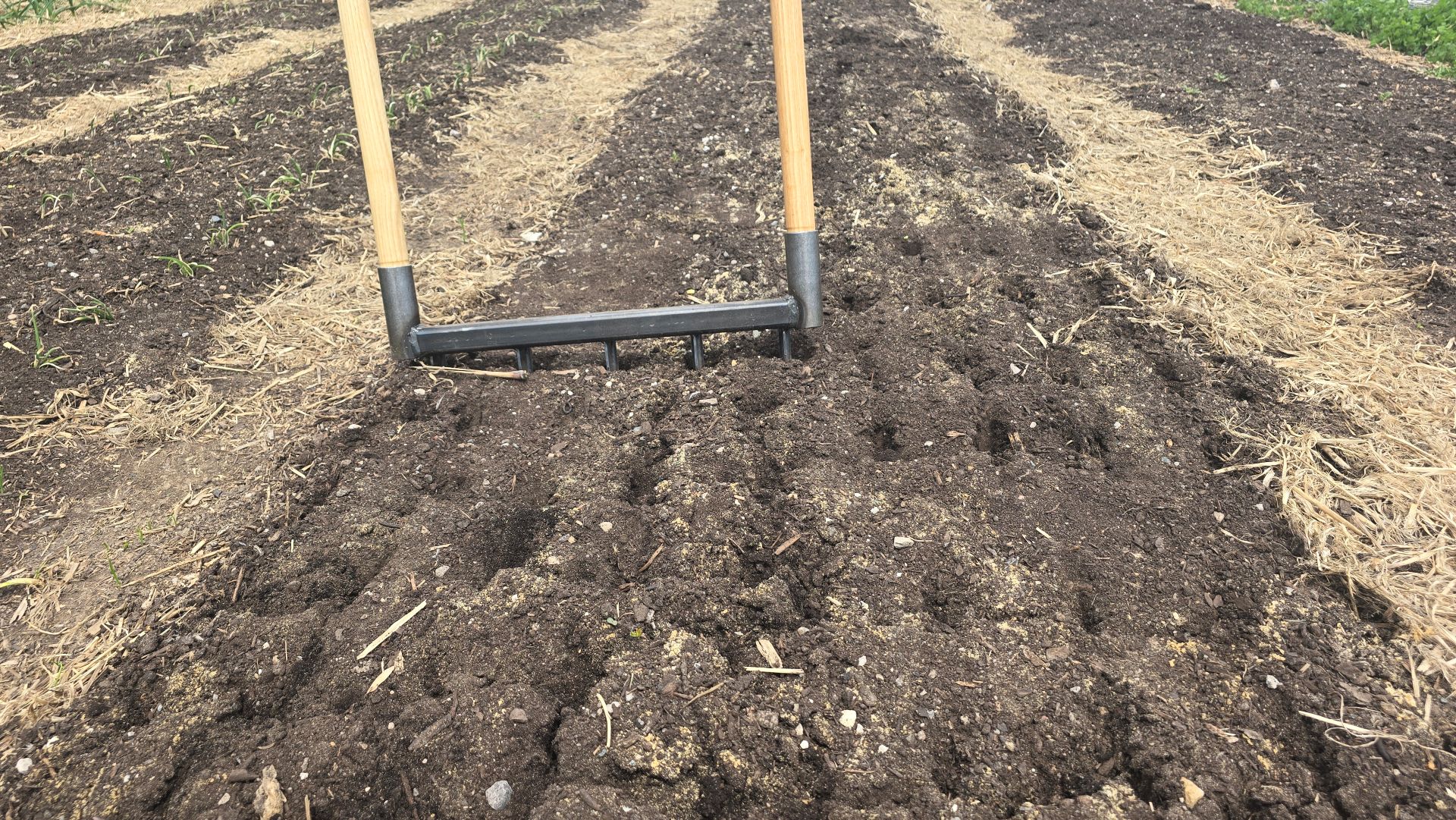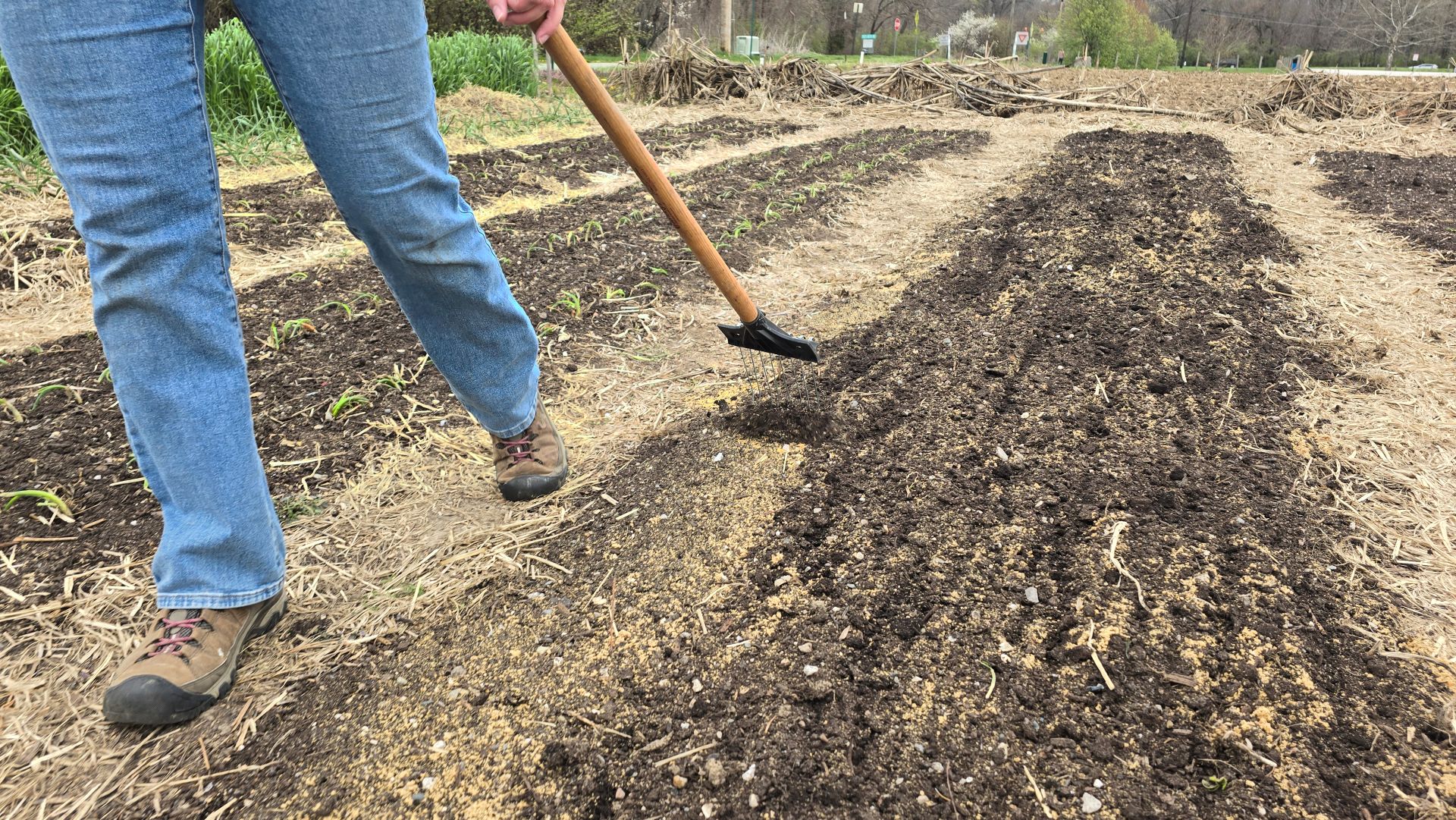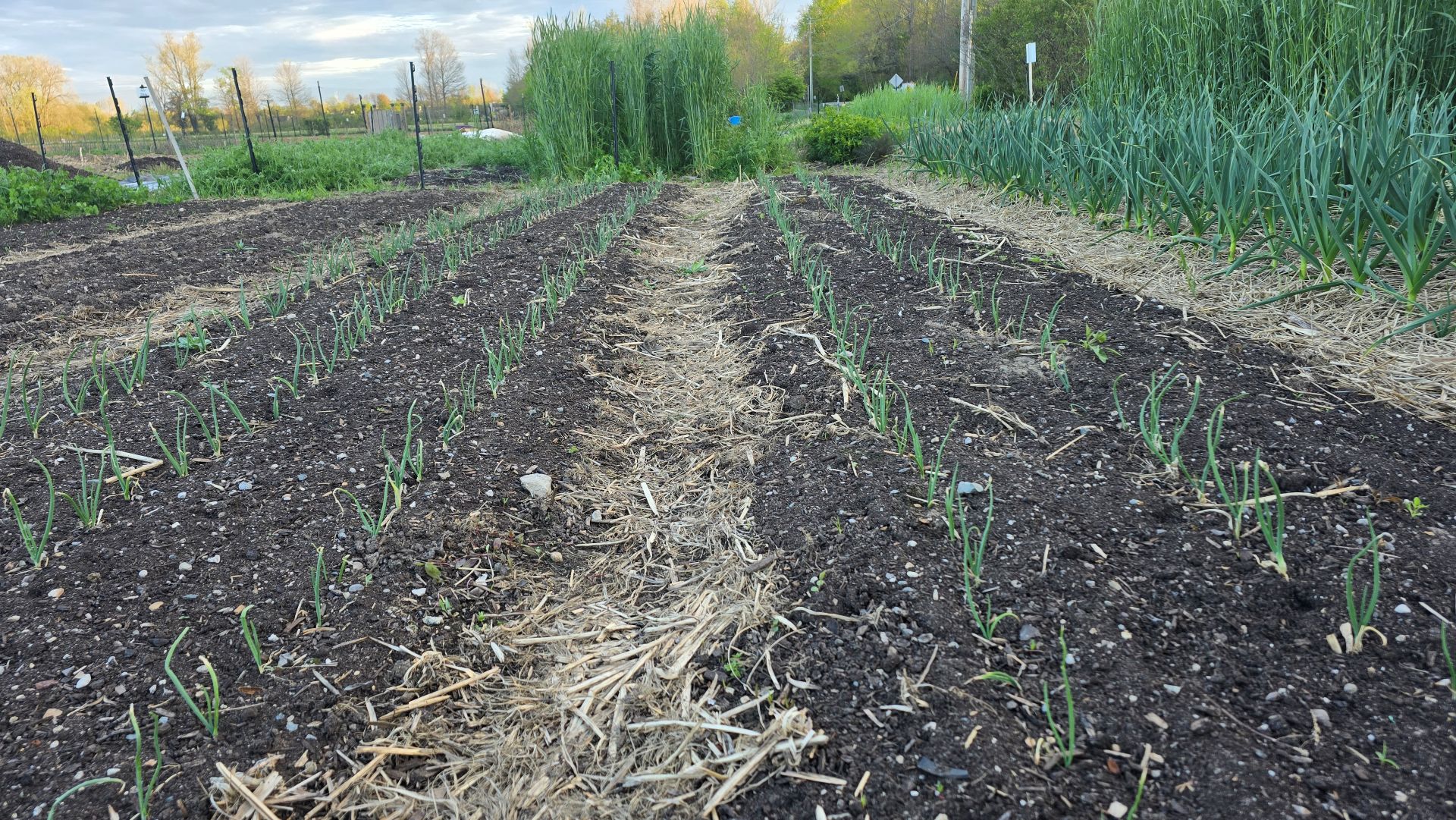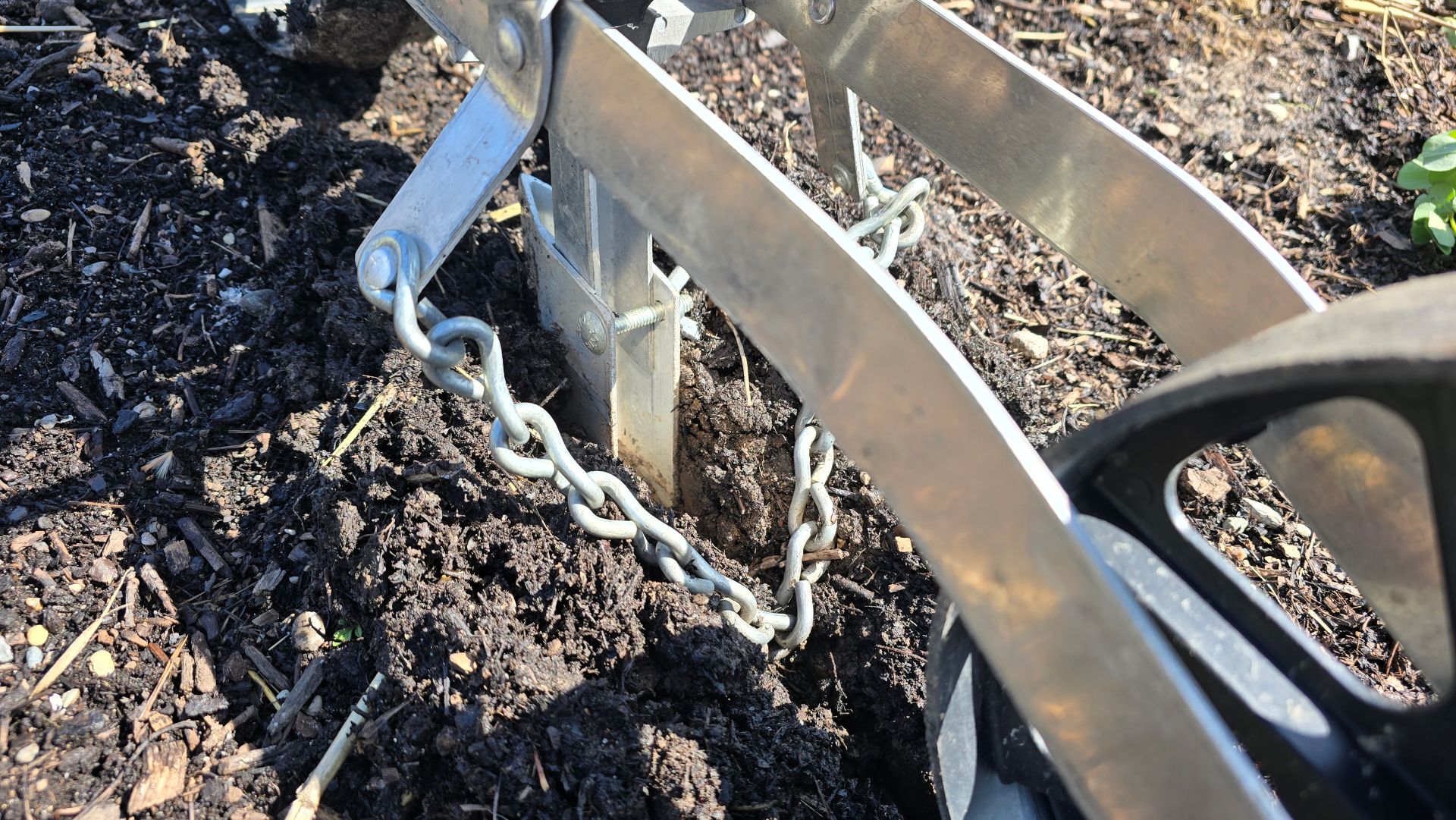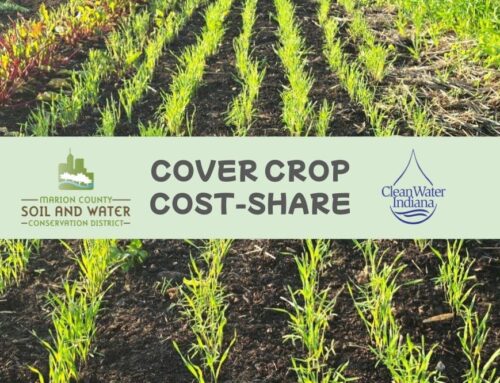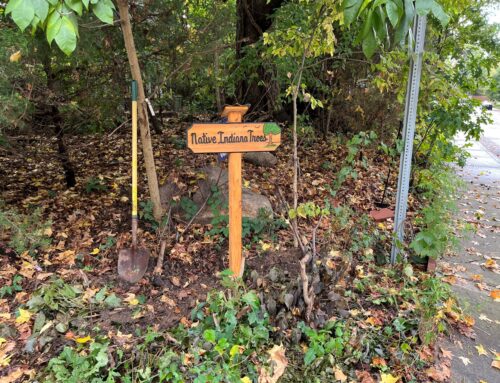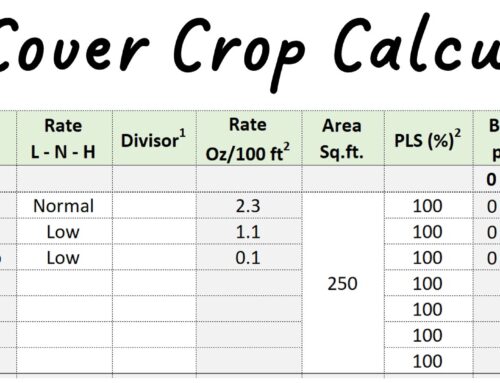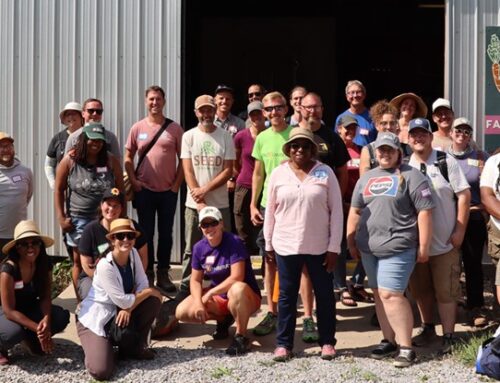Marion County Soil and Water Conservation District Demonstration Garden
@ the Mayor’s Garden Eagle Creek
April 28, 2025 Update
Kevin Allison, Soil Health Specialist
2025 Crop Plan

Beds A1, B3, B4, C5
Planted cereal rye high biomass mix last fall in each of these beds. The beds are being crimped and tarped for at least 25 days or ahead of the target planting date for each crop. Ensure full termination before untarping (Brown residue, not a hint of green).
A1 summer squash, direct seed, 5/30, Crimp and tarp, 5/5
B5 and B6, sweet potatoes, transplant, 5/25, Crimp and tarp 4/29
C5, tomatoes and peppers, 5/15, Crimp and tarp 4/18
A1 note: I usually seed the whole bed with the cover crop. In this bed, I’m experimenting with planting high biomass on the shoulders and legumes in the planting strip ahead of summer squash. There’ll still be enough cereal rye to use as mulch around be the bed, but the planting strip will have less biomass and more nitrogen, which is combatable with seeding the squash. The hairy vetch and crimson clover legumes that were expected to survive the winter did not this year. To gain soil cover, I mulched up the future planting strip with compost and seeded spring cover crops of phacelia and flax. They only grew a few inches before tarping, but my goal is as much living roots as possible. I seeded thickly. The bed is now crimped and tarped for the next 25 days. Then remove the tarp, make spaces in the mulch, and seed summer squash into soil.
Bed A3, A4, A5, A6
Planted winterkilled cover crops (Oats, field peas, flax, and phacelia) last fall on this block of beds. This spring, dead cover crop residue was raked into pathways. I removed any weeds with a soil knife. Weed pressure was low and I continue to scout and spot weed through the season. B5 was broadforked ahead of carrots; the others were not. On all beds, feathermeal was broadcast onto the soil surface as nitrogen fertilizer per Indiana Nutrient Management Tool (INNMT) recommendations by crop type and soil test levels. Then I mulched up with leaf compost, approximately 1″ deep where I’m planting by seed, and at least 1.5″ for transplanted onion plants. Some growers would use more compost depth and seed directly into the compost and then irrigate regularly, as compost dries out quickly. Since I’m unavailable to regularly irrigate, I want the seed in the soil and therefore use a lighter layer of compost mulch. To direct seed, I ran an empty earthway seeder once down each row once, and then ran it again with seed to plant. The dry run loosened the soil for the earthway seeder to move more smoothly on the second run. I rely heavily on the moisture retention resulting from no-tillage and soil health to keep seed moist through germination.
INNMT can be found at marionswcd.org/soilhealth/ under nutrient management.
A3, Onions, 2 rows / Lettuce, 1 row
A4: Onions, 3 rows – planted with dibble
A5: Carrots, 4 rows – planted with earthway
A6: 1/2 spinach, 4 rows / 1/2 beets, 3 rows – planted with earthway
C3: Snap peas, 1 row with flowers on shoulders – planted by pointed hoe, 1″ deep furrow and seeded peas by hand.
For resources, events, and to join our newsletter.
marionswcd.org/soilhealth/
marionswcd.org/events/
marionswcd.org/connect/


